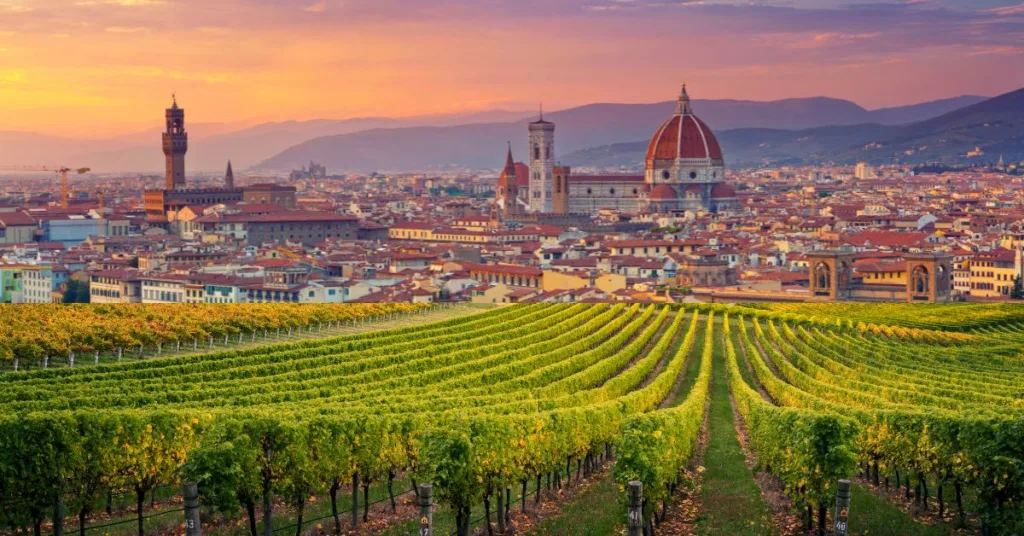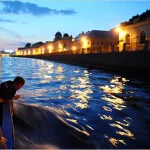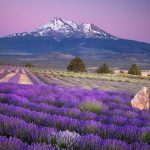Known as one of Italy’s most beautiful cities, Florence brims with wonders—from awe-inspiring architectural gems like museums, palaces, and churches to remarkable artworks that echo the golden age of the Renaissance. Its poetic, enchanting scenery unfolds like a romantic ballad, captivating anyone fortunate enough to visit and savor its charm.
Introduction to Florence
Florence, or Firenze, lies in the Tuscany region of central Italy, about 230 km northwest of Rome. Globally celebrated as the birthplace of the Renaissance, it’s an unmissable stop on any Italian journey. Florence boasts over 50% of Italy’s iconic architectural treasures, with its museums, palaces, and churches housing some of the world’s greatest artistic masterpieces.
With a history stretching back over 2,000 years, Florence’s historic center—recognized by UNESCO as a World Cultural Heritage site in 1982—teems with unique artworks and structures bearing the personal stamps of their creators. This city cradled the legacies of luminaries like Leonardo da Vinci, Michelangelo, Dante, Machiavelli, and Galileo, whose contributions to art and science resonate through humanity’s story.
A Brief History of Florence
Originally a modest Roman village founded in 59 BCE for Julius Caesar’s retired soldiers, Florence thrived due to its fertile land and strategic location. It grew prosperous and stable, eventually becoming Tuscany’s capital under Lombard rule from 774 and the Carolingian Empire’s Margraves from 781.
Florence’s financial prominence surged in 1252 with the minting of the gold Florin, a currency that became Europe’s de facto standard. Yet, turmoil struck with civil war in 1290 and the Black Death in 1348, wiping out over half its population. Recovery came under the Medici family, who seized the Renaissance’s momentum from the 16th to 18th centuries. Their patronage fueled a cultural boom, sparking innovation in poetry, painting, and sculpture by masters like Michelangelo, Leonardo da Vinci, Raphael, Botticelli, and Donatello. This Renaissance revolution rippled across Europe.
Florence joined the Kingdom of Italy in 1860 after shifting between French and Sardinian-Piedmont control. It endured Nazi occupation, a devastating 1966 flood, and a 1993 Mafia car bomb that killed five, injured 37, and damaged Uffizi galleries. Yet, Florence has rebounded impressively, now thriving as a major tourism hub with restored historical landmarks and artworks.
Must-Visit Attractions in Florence
Florence overflows with captivating sites—churches, palaces, squares, museums, and galleries showcasing world-famous art, all set against a backdrop of romantic, ancient beauty from its 2,000-year legacy. The city’s car-free historic streets, reminiscent of Hoi An’s old quarter, invite leisurely strolls to soak in its European charm. Here are some standout spots:
Uffizi Gallery
Nestled beside the Palazzo Vecchio, the Uffizi Gallery is Florence’s most famous museum and top attraction. It displays masterpieces by Botticelli, Caravaggio, Titian, and more, spanning medieval to modern eras, leaving visitors spellbound.
Santa Maria del Fiore Cathedral (Duomo) – A Florence Essential
The Duomo dominates Florence’s skyline with its 40-meter height and a dome soaring over 90 meters, clad in marble. From the 89-meter Campanile bell tower, you’ll enjoy sweeping views of the city’s poetic charm. Opposite lies the octagonal Baptistery, adorned with intricate carvings.
Palazzo Vecchio
Home to the city council, this palace doubles as a museum. Its Hall of Five Hundred dazzles with grand frescoes, including Michelangelo’s famed works. Climb the clock tower for a stunning city vista.
Ponte Vecchio – Florence’s Iconic Bridge
The Ponte Vecchio, Florence’s most celebrated bridge, is lined with shops. At its center stands a bust of Cellini, a renowned metalworker, surrounded by a fence where lovers attach padlocks to wish for eternal romance.
Santa Croce Basilica
This Gothic basilica is a resting place for luminaries like Machiavelli, Michelangelo, Vasari, and Galileo. Brunelleschi’s Renaissance-style Capella di Pazzi adds to its allure.
Piazzale Michelangelo (Michelangelo Square)
For a perfect city panorama, head to this hilltop square. It offers 360-degree views of Tuscany’s capital, featuring replicas of Michelangelo’s David and other sculptures, plus a gallery of his works.
Piazza della Signoria
Florence’s most famous square buzzes with life. Its loggia houses statues like Perseus with Medusa’s head, while the Neptune Fountain and a bronze equestrian statue of Cosimo de Medici add grandeur.
Santa Maria Novella Church
This 13th–14th-century Romanesque church boasts Masaccio’s “The Holy Trinity” fresco. In 1487, Lippi adorned the Strozzi family chapel—Medici rivals—with vivid depictions of John the Evangelist’s life.
Must-Try Foods in Florence
Beyond its art and architecture, Florence offers a rich culinary heritage. Sample these traditional delights:
- Pizza: A beloved Italian staple, perfected with Florence’s traditional flair.
- Bistecca alla Fiorentina: A hefty 1–4 kg T-bone steak, grilled rare with salt, pepper, lemon, and a smoky chestnut finish.
- Lampredotto Sandwich: A medieval street food of thinly sliced tripe simmered in broth, spiced with red sauce.
- Pappardelle al Cinghiale: Wide pasta paired with a rich wild boar ragù.
- Ribollita: A hearty Tuscan stew of stale bread, tomatoes, cannellini beans, seasonal veggies, and herbs.
- Gelato: Born in Tuscany over 500 years ago, Florence’s creamy gelato is a must.
Getting to Florence by Train
From Rome: The 230 km trip takes 1.5 hours by high-speed train or 3 hours by local train, with over 60 daily departures from Rome Termini to Florence Santa Maria Novella (SMN). Fares range from 25–35 USD (~550,000–750,000 VND). Trains offer AC, power outlets, and snacks.
From Venice: The 260 km journey lasts 2 hours 15 minutes, with 36 daily trains from Venice Santa Lucia to Florence SMN via Trenitalia Frecce and ItaloTreno. Tickets cost 20–25 USD (~450,000–550,000 VND), running from 5:30 AM to 7:30 PM.
Hotels in Florence
Villa Antea: A luxurious early 1900s villa minutes from the historic center, offering 6 elegant rooms with antiques, silk rugs, and Carrara marble bathrooms. Location: Via Francesco Puccinotti, 46, 50129 Florence FI, Italy.
Hotel Principe: A family-run gem on the Arno River near Piazza Ognissanti, close to Ponte Vecchio, blending elegance and comfort. Location: Lungarno Amerigo Vespucci, 34, 50123 Florence FI, Italy.
Astro Mediceo: A 3-star hotel in a revamped villa with 15 stylish rooms, a private garden, and easy transit access. Location: Via Frà Bartolommeo, 56, 50132 Florence FI, Italy.
Hotel de La Ville: A charming 4-star hotel on an elegant street, ideal for exploring Florence and day trips across Tuscany. Location: Piazza degli Antinori, 1, 50123 Florence FI, Italy.
San Lorenzo: An affordable option near SMN station and key sights, perfect for budget travelers. Location: Via Rosina, 4, 50123 Florence FI, Italy.
Florence’s allure is undeniable—a dreamy blend of history, art, and culture. If you visit Italy, don’t miss this enchanting city!











